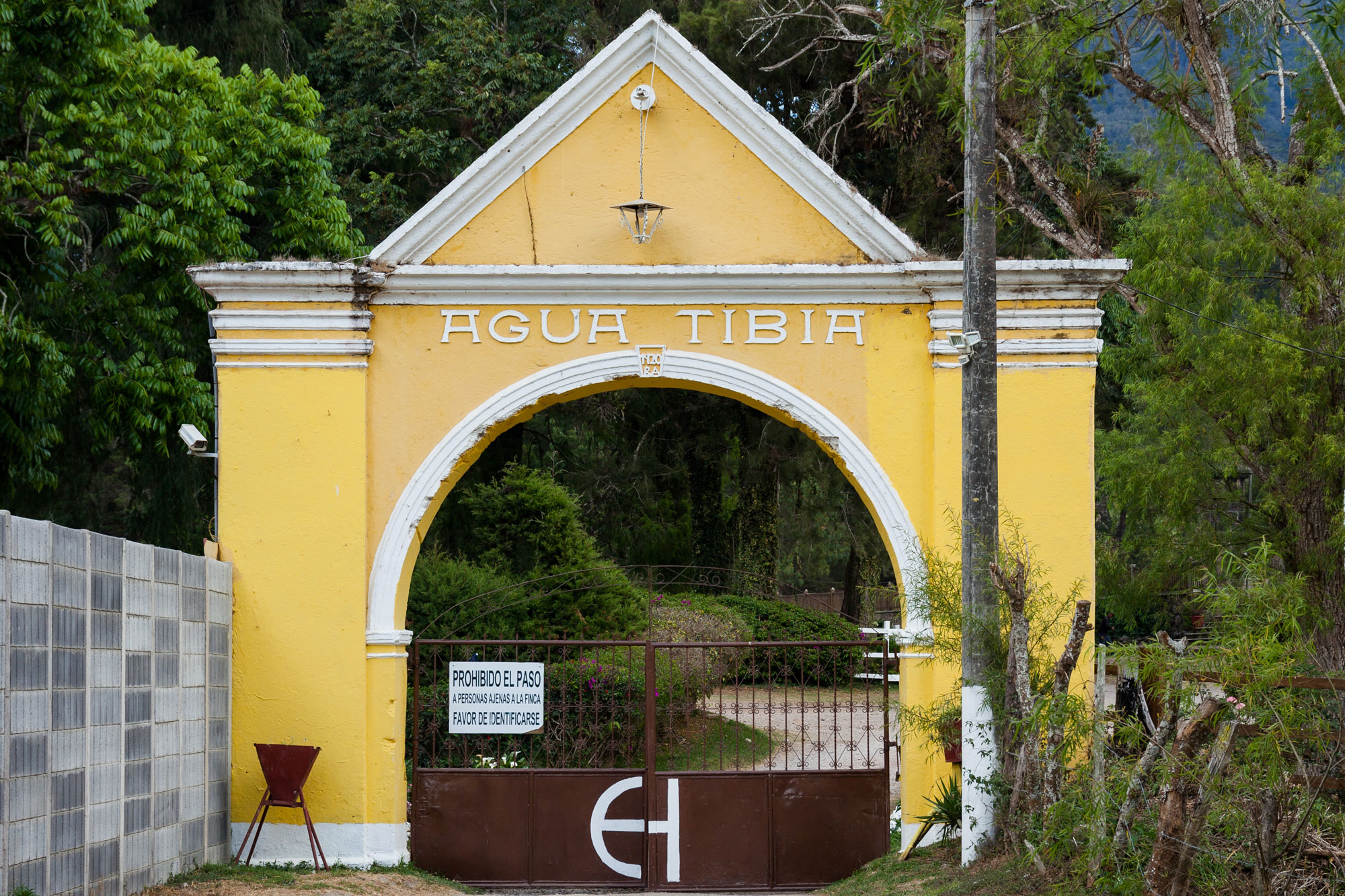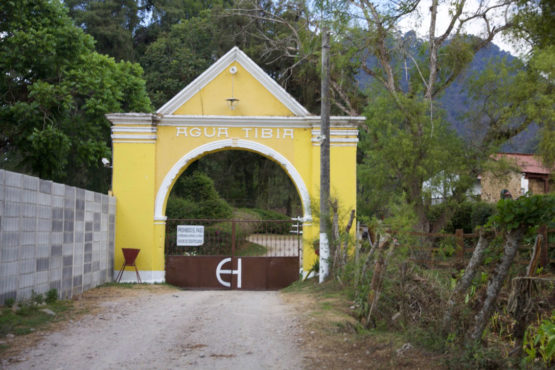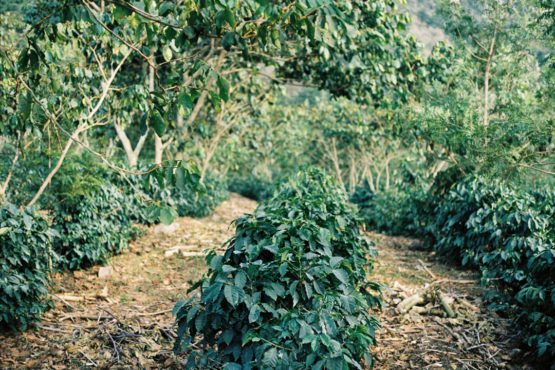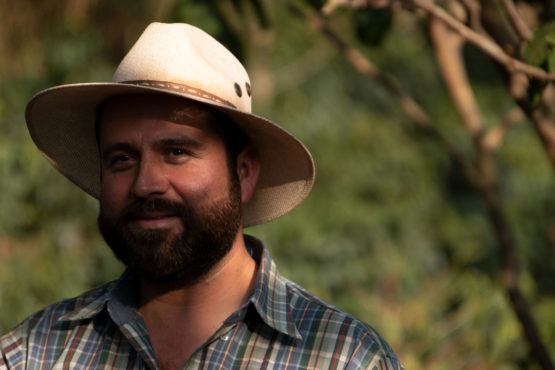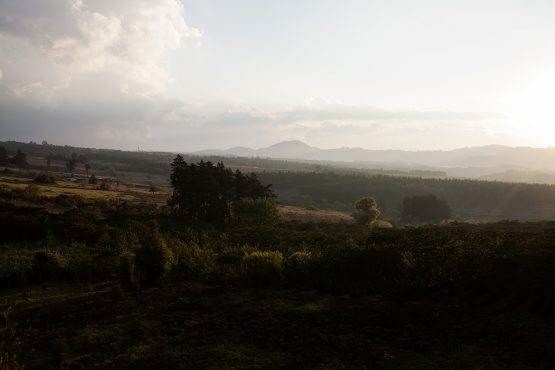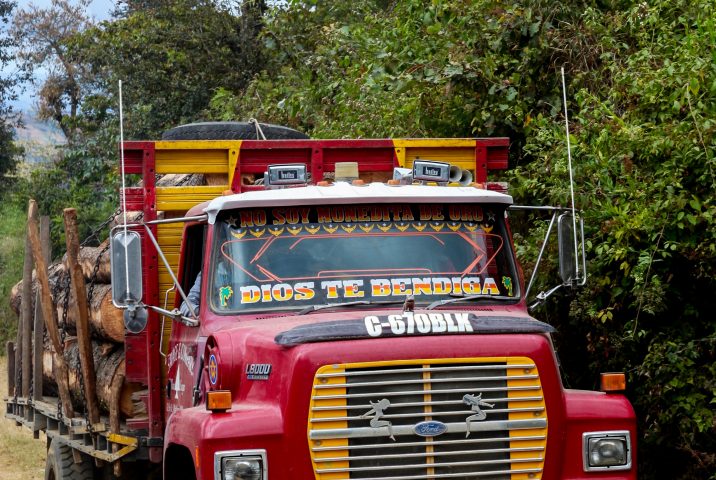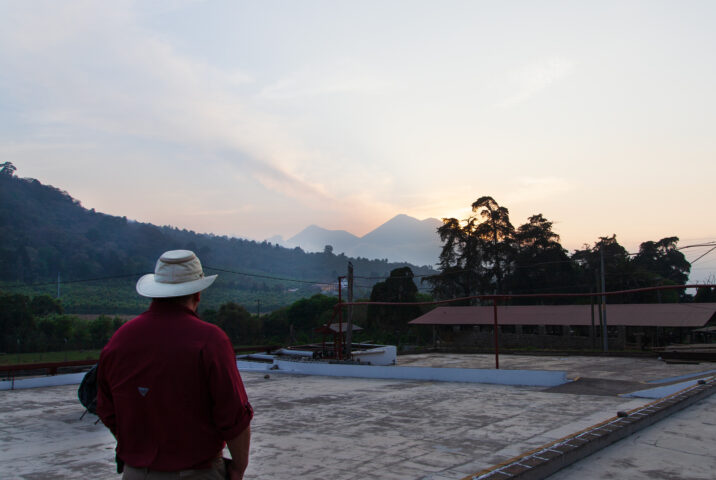Agua Tibia Natural
Rockmelon, plum and guava, balanced by creamy milk chocolate and rose florals. Sweet and jammy.
This 100% Centroamericano microlot was grown and processed at Finca Agua Tibia, an estate located just outside of Guatemala City, in the Fraijanes Plateau. Agua Tibia has been in the Castillo Family since 1886. Historically the land was used to produce wood for the family’s beer brewery. In the 1930s, Holstein and Angus cattle were introduced, and the farm quickly became one of the leading cattle ranches in the country, which remained the primary focus for the farm until 2005.
Coffee was introduced to Agua Tibia in the 1950s, with Bourbon and Typica varieties being planted. At this time, no one in the region had coffee plantations, so the initial plot for the land was very small and experimental. By the 1980s around 112 hectares were planted with coffee, but it wasn’t until 2012 that the family began focusing all of its efforts on coffee production.
Today, 300 of the farm’s 1,530 hectares are dedicated to coffee. The farm also produces avocado, corn and ornamental plants, and the family keeps some dairy cattle. In addition, 465 hectares are dedicated to natural forest and 400 are dedicated to commercial forest.
Agua Tibia is managed by Erick de la Roca, a fourth-generation coffee producer who also owns his own farm, La Esperanza, in Acatenango. Erick lives on the farm at Agua Tibia with his wife and three children, and has been managing it since 2011. He oversees all of the activities on the farm, however coffee is his primary focus and he has been charged with improving both the quality and yield produced.
Agua Tibia’s agricultural calendar begins in May with the planting of coffee seedlings, both in new areas of the farm and to replace old and damaged trees. All seedlings are reared in the farm’s own nursery, using specially selected seeds from the previous harvest. Seedlings are usually planted in the month of June the year prior, so at the time of planting the seedlings are 11 months old and have received the best nourishment possible.
Currently, the farm is planted with Caturra, Pache, Bourbon, Catuai and Mondo Novo – with Panama Gesha, Pacamara and the Centroamericano (H1) hybrid planted as recently as 2019. Coffee plants are grown under the shade of Ingas trees which drop large leaves on the ground, providing valuable organic matter that helps to preserve the moisture in the soil.
All the trees on the farm are given regular applications of fertiliser, and foliar applications in October— as the best time for the prevention and control of diseases is during the cooler winter months. Pruning is conducted in the months of February and March, which helps maintain the health and productivity of the trees. Agua Tibia maintains a staff of twenty permanent workers year-round to look after the farm.
ABOUT THE CENTROAMERICANO VARIETY
Centroamericano, or H1, is a hybrid of the Sarchimor T5296 and Sudan Rume varieties. Created by a consortium including French research institute CIRAD, a regional network of national coffee institutes in Central America (PROMECAFE), and a coffee gene bank in Costa Rica (CATIE), Centroamericano is a dwarf variety that has great resistance to coffee leaf rust, high yields and very good cup quality. Our good friend and supply partner Eduardo Ambrocio was part of the group of coffee professionals who evaluated the trials of the hybrid as it was being developed.
Agua Tibia, and many other farms in Guatemala, are choosing to use varieties like Centroamericano because of their resistance to roya and potential for excellent cup quality at higher elevations. The challenge of this hybrid, however, is that it can’t be propagated through seeds, but rather they can only be reproduced through clonal propagation, which entails using plant material from a ‘mother plant.’ This process is slow and somewhat expensive, but worth it for many farmers, as the productivity, resistance and quality potential of Centroamericano are quite high.
THE CASTILLO FOUNDATION
The Castillo family is a very famous and successful family in Guatemala who also own Gallo beer, among other businesses in Guatemala. They have set up a foundation called Castillo Cordova Foundation which is focused on supporting their connected communities to improve their nutrition and education. As part of this foundation they have built a school at Agua Tibia for the workers’ children to attend.
ABOUT FRAIJANES
Located a mere 40-minute drive from Guatemala City is Fraijanes, one of Guatemala’s oldest coffee-growing regions. Its proximity to the country’s capital was pivotal in its early days, as it helped transform the region into one of the country’s most productive. As the city grew and its population swelled, urban expansion pushed many coffee estates out of Fraijanes, with many of the local farm workers choosing to move away from their rural communities to find work in the city.
The region is known for its volcanic pumice soil, very high altitudes and plentiful rain during the wet season. Fraijanes is bordered to the west by Pacaya, one of Guatemala’s three active volcanoes. Similar to Chi Q’aq’ (also known as Fuego) Volcano in Antigua, Pacaya releases light deposits of ash every so often, boosting the mineral content of the region’s soils.
Although early mornings in Fraijanes are cloudy and foggy, days are mostly sunny. The dry season is particularly warm, which creates the perfect conditions for drying coffee without much need of mechanical aid. In recent years, these climatic conditions have been harnessed by farmers who focus on specially prepared lots, like those produced at Agua Tibia!
HOW THIS COFFEE WAS PROCESSED
Harvest time at Agua Tibia begins in November and concludes at the end of March. During this time, seasonal workers are trained in best-picking techniques, and only the ripest cherries are delivered through the wet mill.
Once the coffee is picked, it is left overnight (up to eighteen hours) to go through a period of aerobic fermentation in cherry form. This is done using permeable nylon sacks, which keeps coffee stable by matching its internal temperature with that of the surrounding environment. At this stage, Agua Tibia’s team is very careful to place the sacks filled with cherries in a cool, dry place to protect them from the elements, as high temperatures can accelerate fermentation and introduce undesirable flavours.
Following this process, cherries are washed and placed on the estate’s concrete patios to dry for around 20-25 days. When laying cherries out, the team carefully sort through them to remove any unripe or damaged fruit. As the cherries dry, workers continuously sort the coffee by hand several times a day, to ensure they dry evenly, until the desired moisture content is reached.
WHAT’S IN A NAME?
The name Finca Agua Tibia predates the Castillo family and, to their knowledge, has always been the name of the farm. Agua Tibia means Warm Water in Spanish, and with active volcanoes to the west of the region, it is highly likely that at one point there may have been hot springs in the area.
